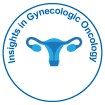Nuestro grupo organiza más de 3000 Series de conferencias Eventos cada año en EE. UU., Europa y América. Asia con el apoyo de 1.000 sociedades científicas más y publica más de 700 Acceso abierto Revistas que contienen más de 50.000 personalidades eminentes, científicos de renombre como miembros del consejo editorial.
Revistas de acceso abierto que ganan más lectores y citas
700 revistas y 15 000 000 de lectores Cada revista obtiene más de 25 000 lectores
Indexado en
- Búsqueda de referencia
- Universidad Hamdard
- EBSCO AZ
- publones
- ICMJE
Enlaces útiles
Revistas de acceso abierto
Comparte esta página
Abstracto
Association between antenatal vulvovaginitis and birth-related perineal trauma
Adriana Amorim Francisco, Federal University of São Paulo, Brazil
Statement of the Problem: Birth-related perineal trauma commonly affects women who give birth vaginally and adversely affects postpartum recovery. In general, women who had diagnostic of antenatal vulvovaginitis are more likely to have these injuries; however there is no robust evidence that support such association. Objective: To identify whether antenatal vulvovaginitis is associated with perineal trauma in normal birth. Method: A cross-sectional study with 100 primiparous women, at least 18 years of age, who gave birth to a single, live, full-term fetus in vertex presentation at a midwife-led birth center. Data were collected from the antenatal and birth record and by structured interview of the participants. Results: mean of participants’ age 23.1 years (SD: 4.8), 16% of labor induced with misoprostol, 54% of synthetic oxytocin infusion in labor, 83% of lithotomy birth position, 98% of “hands on” maneuver, 75% of perineal trauma (70.7% first degree and 29.3% second degree laceration), 54% of antenatal vulvovaginitis (42% treated in the antenatal period), mean of newborn birth weight, head and thoracic circumference: 3.102g (SD: 385), 33.3cm (SD: 1.2) and 32.2cm (SD: 1.7), respectively. Only the variables antenatal vulvovaginites and newborn birth weight and head circumference were associated with perineal trauma. Women who had antenatal vulvovaginitis were 4.7 more likely to have perineal trauma compared to those without vulvovaginitis, regardless of the newborn birth weight and head circumference. Each increase of 100g in the newborn’s birth weight and 1cm in the head circumference increased by 21% and 51% the chance of maternal perineal trauma in childbirth, respectively. There was no association between treating antenatal vulvovaginitis and perineal trauma or antenatal vulvovaginitis and perineal trauma severity. Conclusion: It is necessary to prevent antenatal vulvovaginites, as well as to offer special perineal care to women who had antenatal vulvovaginitis and to those who have had or is pregnant with a large baby.
Revistas por tema
- Agricultura y acuicultura
- Alimentación y Nutrición
- Bioinformática y biología de sistemas
- Bioquímica
- Ciencia de los Materiales
- Ciencia general
- Ciencias Ambientales
- Ciencias Clínicas
- Ciencias farmacéuticas
- Ciencias Médicas
- Ciencias Sociales y Políticas
- Ciencias Veterinarias
- Enfermería y atención sanitaria
- Física
- Genética y biología molecular
- Geología y Ciencias de la Tierra
- Ingeniería
- Inmunología y Microbiología
- Química
Revistas clínicas y médicas
- Anestesiología
- Biología Molecular
- Cardiología
- Cirugía
- Cuidado de la salud
- Dermatología
- Diabetes y Endocrinología
- Enfermedades infecciosas
- Enfermería
- Gastroenterología
- Genética
- Inmunología
- Investigación clínica
- Medicamento
- Microbiología
- Neurología
- Odontología
- Oftalmología
- Oncología
- Pediatría
- Toxicología

 English
English  Chinese
Chinese  Russian
Russian  German
German  French
French  Japanese
Japanese  Portuguese
Portuguese  Hindi
Hindi